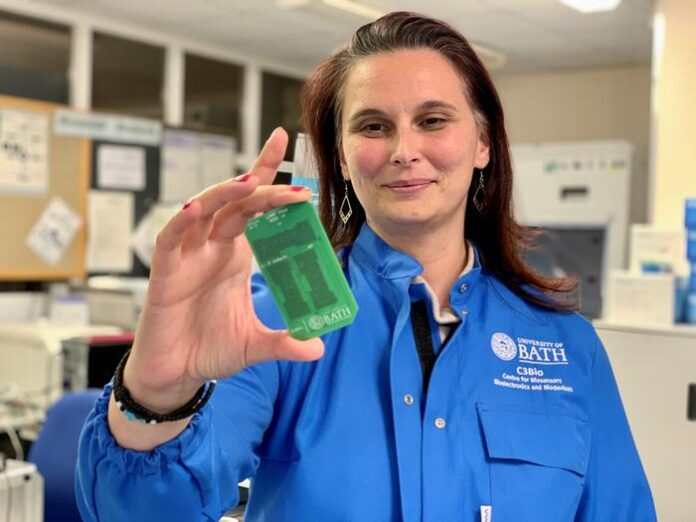
Engineers at the University of Bath, England, have developed a lab-on-a-chip genetic diagnostic test that can provide lab-quality results to identify a virus within three minutes. The small device, called LoCKAmp, has already been proven as a low-cost method to rapidly detect COVID-19 and the developers note that it can be adapted to detect bacteria, as well as diagnose health conditions such as cancer. Details of the LoCKAmp were published today in the journal Lab on a Chip.
Using a nasal swab to collect a sample, LoCKAmp employs the same genetic based testing techniques for a PCR tests, by releasing and amplifying genetic material from the swab sample followed by a chemical reaction to identify that potential presence of a pathogen. Results of the test can then be viewed via a smartphone app.
“We started researching and developing LoCKAmp during the second wave of Covid in the U.K. We were confident we could create a portable, low-cost device that could carry out genetic identification of the virus, like a PCR test, within 10 minutes,” said research leader Despina Moschou, PhD, from Bath’s Center for Bioengineering & Biomedical Technologies (CBio) “We have done that but found it can actually work within just three minutes.
“This is an amazing display of the possibilities of lab-on-a-chip technology and, given the low cost and adaptability of the technology to detect a range of conditions, a potentially highly valuable and unique tool for a range of healthcare settings.”
The lab-on-a-chip test device utilizes reverse transcription loop-mediated isothermal amplification (RT-LAMP) to amplify specific sequences of RNA, allowing it to quickly detect a specific virus it is looking for. The Bath team contend that the LAMP detection method is faster and has higher sensitivity and specificity than PCR-based testing methods.
A key feature of the LAMP method is that it can take place at ambient temperatures—around 65°—while PCR testing requires multiple thermal cycles to complete its amplification process. The result is a smaller, more portable method for testing the consumes less power to run.
Once a nasal swab sample is added to the device, the LoCKAmp pumps the liquid through tiny transparent “microfluidic” channels layered onto the circuit board, above copper heaters just 0.017mm thick. These heat the sample, releasing the RNA genetic material from the virus. This is then further heated and treated with RT-LAMP chemicals to encourage multiplication. If the specific virus RNA is present in the amplified sample, it fluoresces under light, denoting a positive test.
In addition to being used as a diagnostic device for individual cases, the Bath team said the device can also be used to provide community-level tracking of pathogens via testing of wastewater.
“With LoCKAmp technology providing both low cost and real time genetic target identification and quantification, we’re getting ever closer to real time pathogen tracking,” noted Barbara Kasprzyk-Hordern, a professor in Bath’s department of chemistry, who contributed to the research of LoCKAmp. “This opens exciting opportunities enabling the establishment of early warning systems utilizing wastewater for pathogen surveillance in communities.”











